One thing I find wonderful is that there are readers of this blog, Brontë lovers, from all corners of the globe. I hope wherever you are, you’re enjoying a happy and healthy start to the year. Those of us in the United Kingdom are certainly ‘enjoying’ a very cold start to the year, and due to huge rises in energy costs many of us are living in colder homes than ever before. Spare a thought for the Brontës – how did they cope with the cold conditions in Haworth Parsonage? We’re going to look at that in today’s post.
As all who are fortunate enough to have visited Haworth in West Yorkshire know, it’s a village that clings to the north west tip of the county, surrounded on three sides by bleakly dramatic Pennine moorland. The Parsonage itself, which was home to the Brontë family for so long, is at the very summit of the village, and the moors sweep away from its very walls. The result is often very beautiful, but even more often extremely cold.
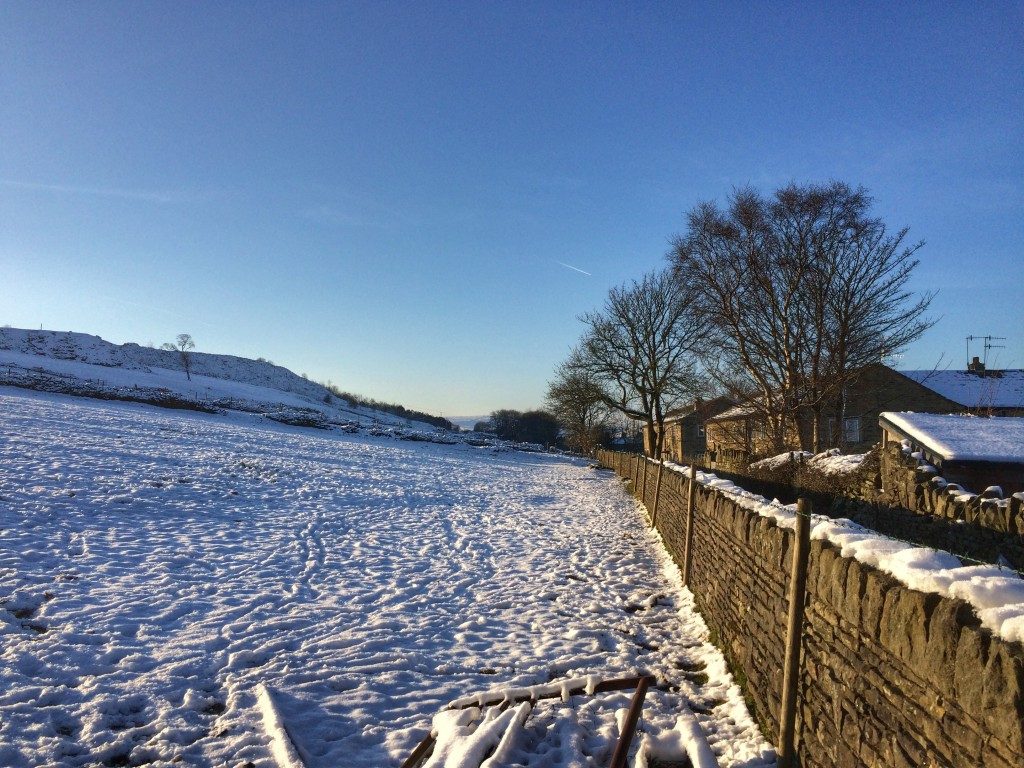
The Brontës would have become used to driving rain, heavy snow and howling winds – and its presence finds a way into many Brontë novels and poems. The ‘wuthering’ of Wuthering Heights, for example, references a local dialect word for a particularly icy wind which blows across bleak, open landscapes.
Aunt Branwell must have felt the cold more than most, having spent most of her life in the far warmer climes of Penzance in Cornwall, 400 miles to the south. Ellen Nussey described one way in which she coped with the cold Parsonage: “She had a horror of the climate so far north, and of the stone floors in the parsonage. She amused us by clicking about in pattens whenever she had to go into the kitchen or look after household operations.”
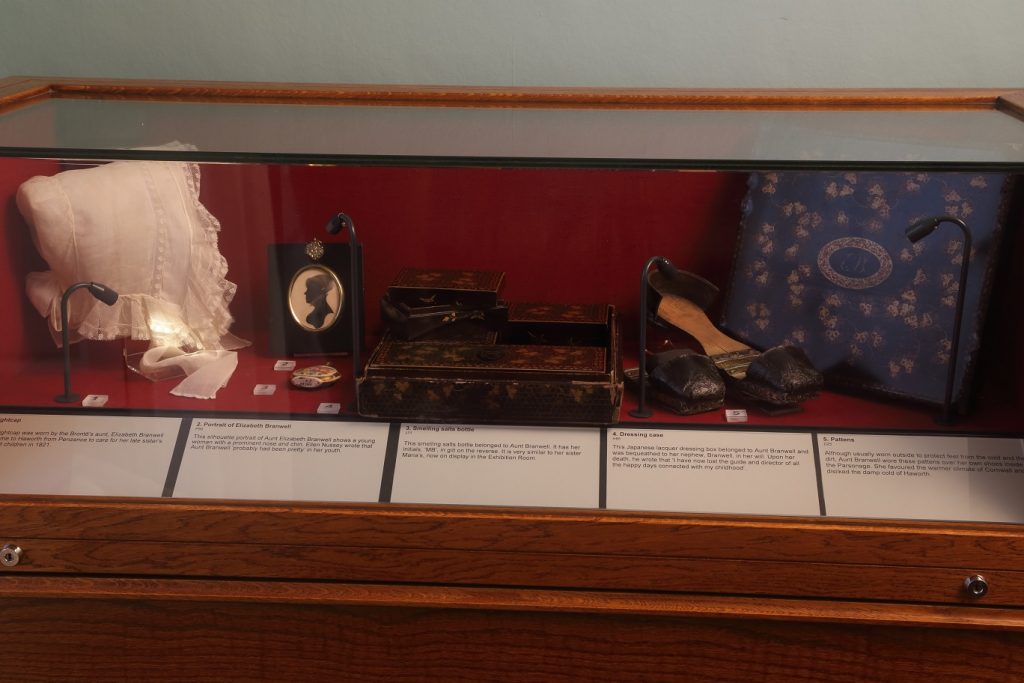
Pattens are metal soles fastened to the bottom of shoes; typically used outside to provide grip in snow or ice, Aunt Elizabeth used them indoors to protect her feet from the freezing stone floor. As can be seen from pairs of boots which still remain part of the Brontë Parsonage Museum collection, early nineteenth century shoes were very different to those we wear today. They were much thinner, and yet the Brontës, especially Emily, would think nothing of walking long distances in them, whatever the weather.
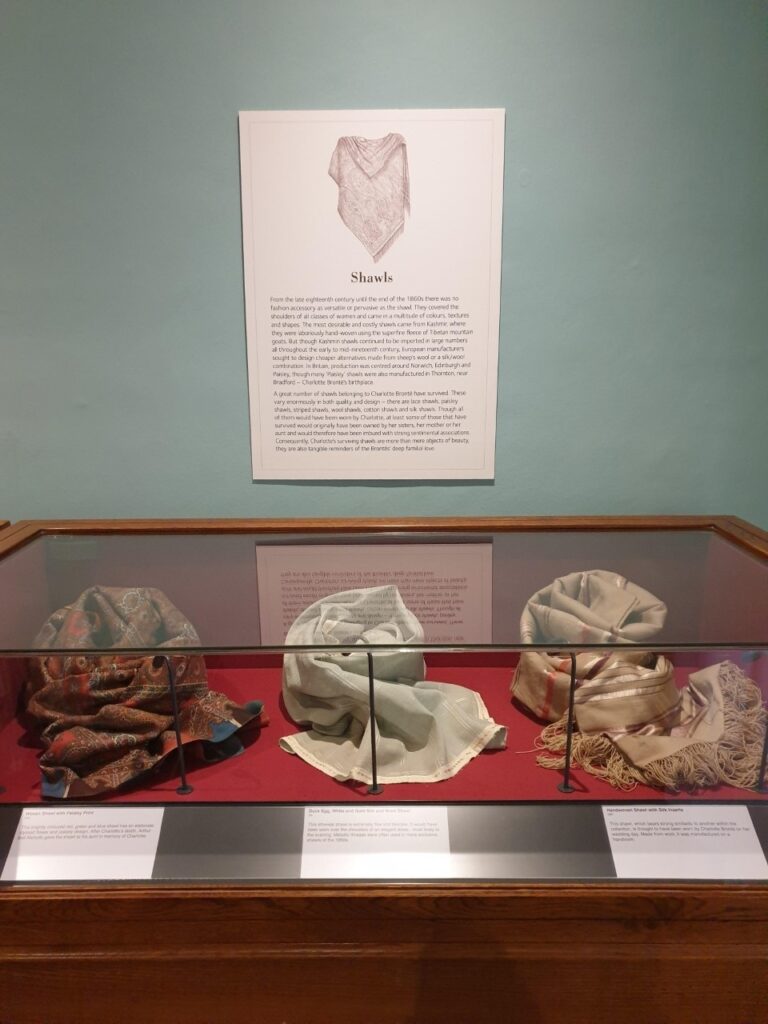
It’s also hard to imagine how they coped with the bitter cold without today’s thermal clothing and quilted coats. One way they coped was to layer up, and to wrap shawls tightly around them. The collection of shawls in the Brontë museum is one of its most beautiful treasures, but they were highly practical and necessary items too.
The harsh winter climate of Haworth contributed to continuous colds and illness, but two letters sent on this day in 1849 deal with a far more serious complaint. Anne Brontë had by this time been diagnosed with terminal consumption, tuberculosis as we would call it today, and Charlotte’s publisher George Smith had offered to pay for leading London specialist Dr. Forbes to visit Haworth Parsonage to see if anything could be done for Anne. Charlotte and her father declined this offer, but instead said they would listen to any advice Dr. Forbes could offer. Alas, Dr. Forbes concurred with Dr. Teale of Leeds, there was nothing more to be done.
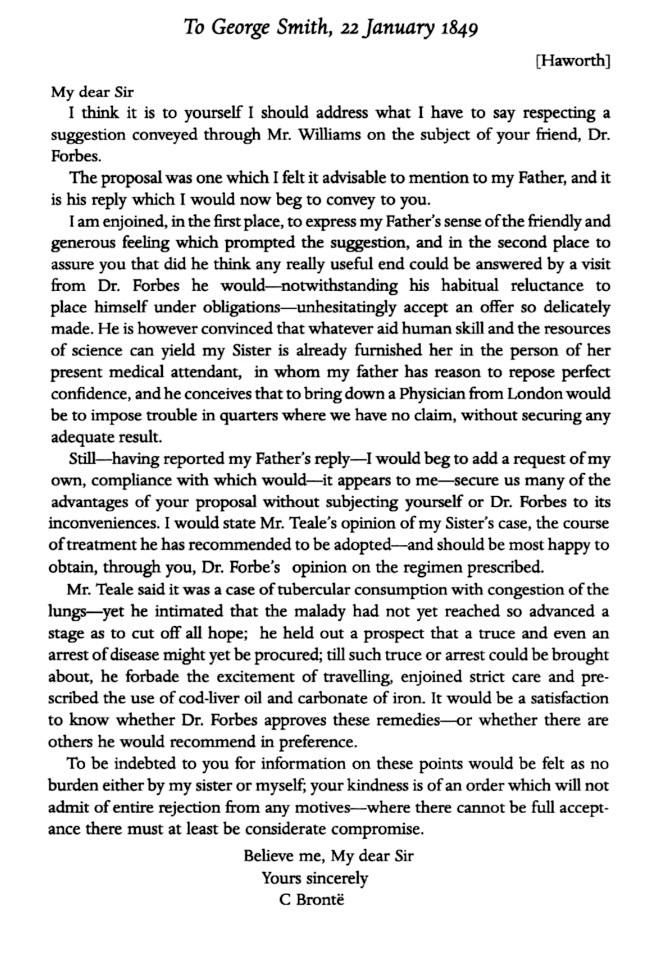
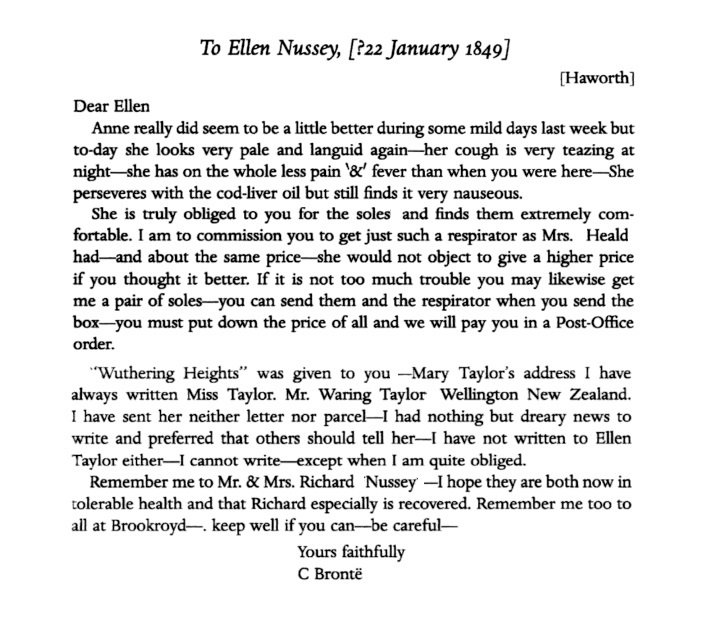
The second letter sent by Charlotte on this day 174 years ago shows that Ellen Nussey, ever practical and kind, had also offered help. On Anne’s behalf, Ellen purchased a respirator and pairs of cork soles for both Anne and Charlotte. These soles were placed inside shoes, and once again were used to provide some respite from the cold stone floors of Haworth Parsonage. We know from a subsequent letter that the respirator cost Ellen 30 shillings, and the cork sales ten pence each. Charlotte sent Ellen a postal order for two pounds as payment, along with a review of the cork soles: ‘which I find extremely comfortable’.
Warmer weather will soon return as the wheel of the year spins round, but until then let’s all be thankful that we don’t have to cope with winter as the Brontës and so many others did – without the aid of central heating, warm modern clothing, or winter footwear. Keep warm and I hope to see you again next week for another new Brontë blog post.
